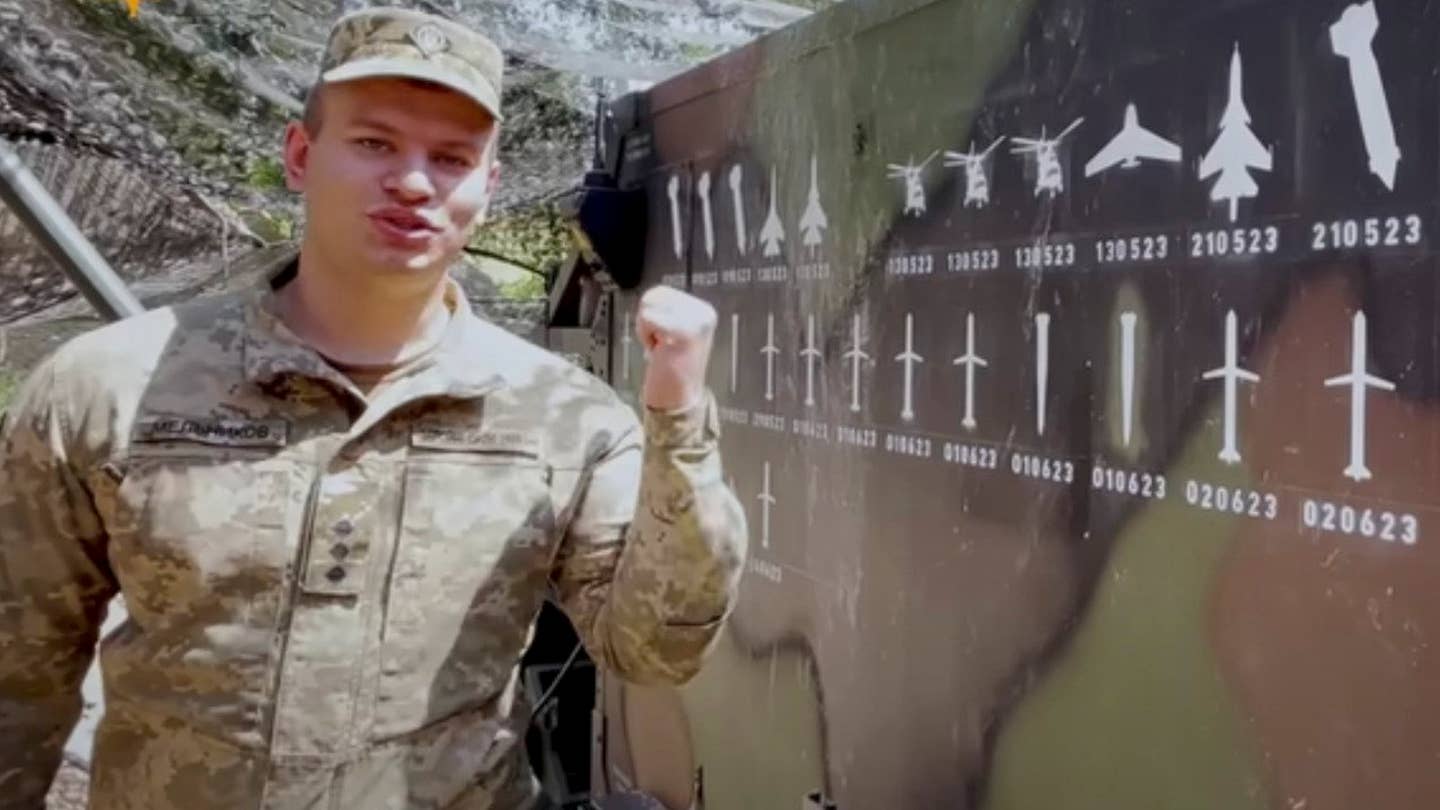On July 3, the Ukrainian Air Force released a video that seemed to provide some information about the ambush that occurred on May 13, resulting in the loss of multiple Russian aircraft.
The video in question suggested that one of the donated Patriot air defense systems was responsible for downing several Russian aircraft on May 13.
The incident occurred within Russian territory and resulted in the loss of at least four, and potentially five, Russian military aircraft.
In the released footage, a shot captured the attention of many defense observers. On the side of a Patriot battery were depictions of two Russian fighter jets and three Russian helicopters adorned with inscriptions of “May 13.”
The subtle yet significant hint implied a link between these aircraft and the events of that action-packed day. The video was published coinciding with celebrating the Anti-Aircraft Missile Forces of the Armed Forces of Ukraine Day.
This occasion holds great importance for Ukraine as it serves as an opportunity to honor and recognize the achievements of its military personnel.
The events that transpired on May 13 involved significant losses for Russian Aerospace forces, as previously reported by the EurAsian Times. On that day, two Russian Mi-8 helicopters, one Su-34 fighter bomber, and one Su-35S fighter were reportedly lost, with no survivors.
All four aircraft crashed in Russia’s Bryansk Oblast, which is situated opposite Ukraine’s Chernihiv Oblast in the northeast direction.
Moreover, Ukrainian Air Force spokesman Col. Yuri Ihnat hinted that a third helicopter might have been brought down. However, he alleged that the Russians were responsible for accidentally shooting down their own aircraft.
During the initial reporting of the incident, there was no clear confirmation regarding which specific air defense system was responsible for shooting down the Russian Aerospace Force (RuAF) fighters. But the latest video seems to indicate the potential role of the Patriot air defense system in the downing.
At the time of the incident, EurAsian Times highlighted that the element of surprise was crucial for the success of the Ukrainian forces. However, it was expected that Russia would adapt by introducing new tactics or weapon systems into the conflict.
Did The Patriots Make The Kill?
During the incident, two Mi-8 helicopters were shot down, with at least one of them being a Mi-8MTPR-1 model equipped with Rychag-AV radar-jamming equipment and the other likely serving as a dedicated search-and-rescue helicopter.
The Su-34 and Su-35 were also targeted that day. The Su-34 was aiming to launch a glide bomb at Chernihiv, while the Su-35 protected the Su-34 from Ukrainian interceptors.
Russian forces utilize a 3,300-pound glide bomb to target Ukrainian cities and military forces. The glide bomb is a rough counterpart of the winged Joint Direct Attack Munition glide bomb provided by the United States to Ukraine.
The glide bomb, launched from high altitudes, provides Russian fighter crews the range to conduct attacks without crossing into Ukraine, addressing the risk posed by Western-supplied air-defense systems such as Patriots, Iris-Ts, and NASAMS.
Before the arrival of West-supplied defense systems, the Ukrainian S-300 system was the sole threat to Russian planes on their side of the border, but its limited missile supply compelled Ukrainian troops to use it cautiously.

The exact details of the ambush remain unknown. It is possible that the Patriot system shot down the two Sukhoi aircraft, and then the Ukrainian forces targeted and downed the Russian Mi-8 helicopters.
The rapid sequence of events suggests that the helicopters might have been in close proximity during the Sukhoi shoot-downs.
However, for this to have happened, the Ukrainian forces would have needed to move the Patriot batteries near the border areas.
A Brazil-based defense analyst, Patricia Marins, told EurAsian Times, “A Patriot would be able to reach that distance if the launchers are near the border.”
She added, “I don’t think they [Ukraine] should move an expensive Patriot battery there. It would be easier and cheaper to move a Buk, and the holes on the debris are evidence of Buk missiles.”
Marins noted that the markings on the equipment are derived from information provided by the Ukrainian Air Force. However, the reported numbers have likely been inflated.
Similarly, Mike Mihajlovic, a defense technologies specialist and former Army officer of the Canadian armed forces, shared his perspective with EurAsian Times, stating, “Based on my experience, they [Ukraine] provide nearly 90% false information.”
He added, “I noticed markings in the video indicating the downing of Kinzhal, which is nonsense. Moreover, all the content Kyiv ‘publishes’ is politically driven. The Vilnius summit is approaching, and they must demonstrate to their masters that their investment is yielding results.”
He elaborated, saying, “I’m not saying that Patriot didn’t fire or didn’t have some hits, but the reality is that only 5-10 % is maybe, just maybe true.”
The Patriot system is not highly mobile, and deploying it very close to the border to ambush Russian planes would be extremely risky.
Marins also highlights this vulnerability, who points out that the Patriot batteries are highly susceptible to being identified, targeted, and subjected to a bombing near the border, particularly in smaller cities.
Nevertheless, the former Canadian Army Officer said it’s not entirely impossible and may have happened.
But, he explained that if he were in a position of authority, he would opt for the S-300V as a more favorable choice. Consequently, he acknowledged that credit should be attributed where it’s deserved if they indeed accomplished their claims.
Mihajlovic highlighted the need to approach Ukrainian claims with extreme skepticism, using “not just a grain of salt but rather a bag of salt.”
Meanwhile, the reasons behind Ukraine’s decision to withhold the information of a possible Patriot battery involvement until now remain unclear, leaving room for speculation.
During a press conference on June 3, Ukrainian Air Force spokesman Col. Yuri Ihnat did not mention any claim related to the Patriot battery, and he was not asked about it either.
- Contact the author at ashishmichel(at)gmail.)com
- Follow EurAsian Times on Google News




